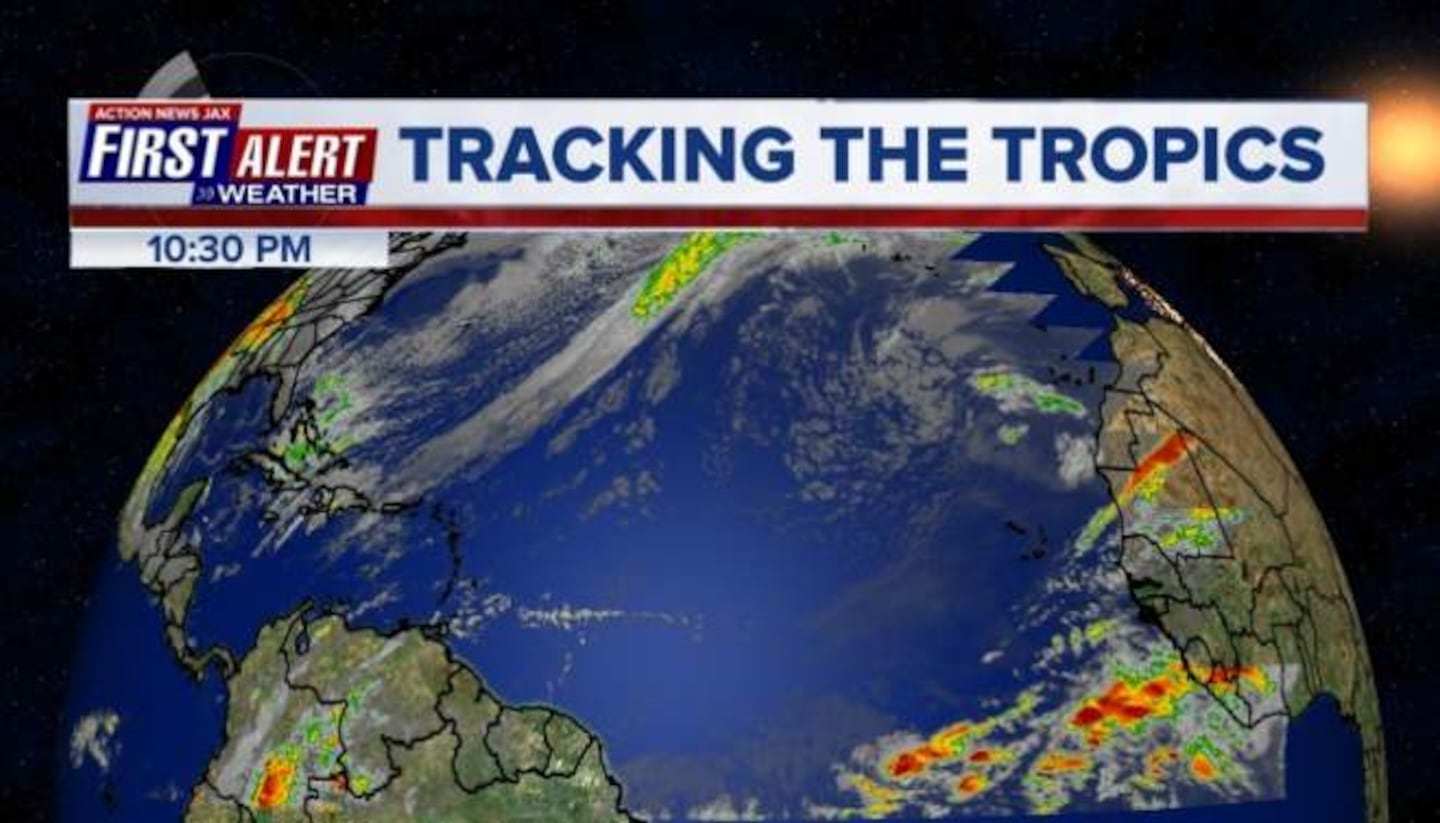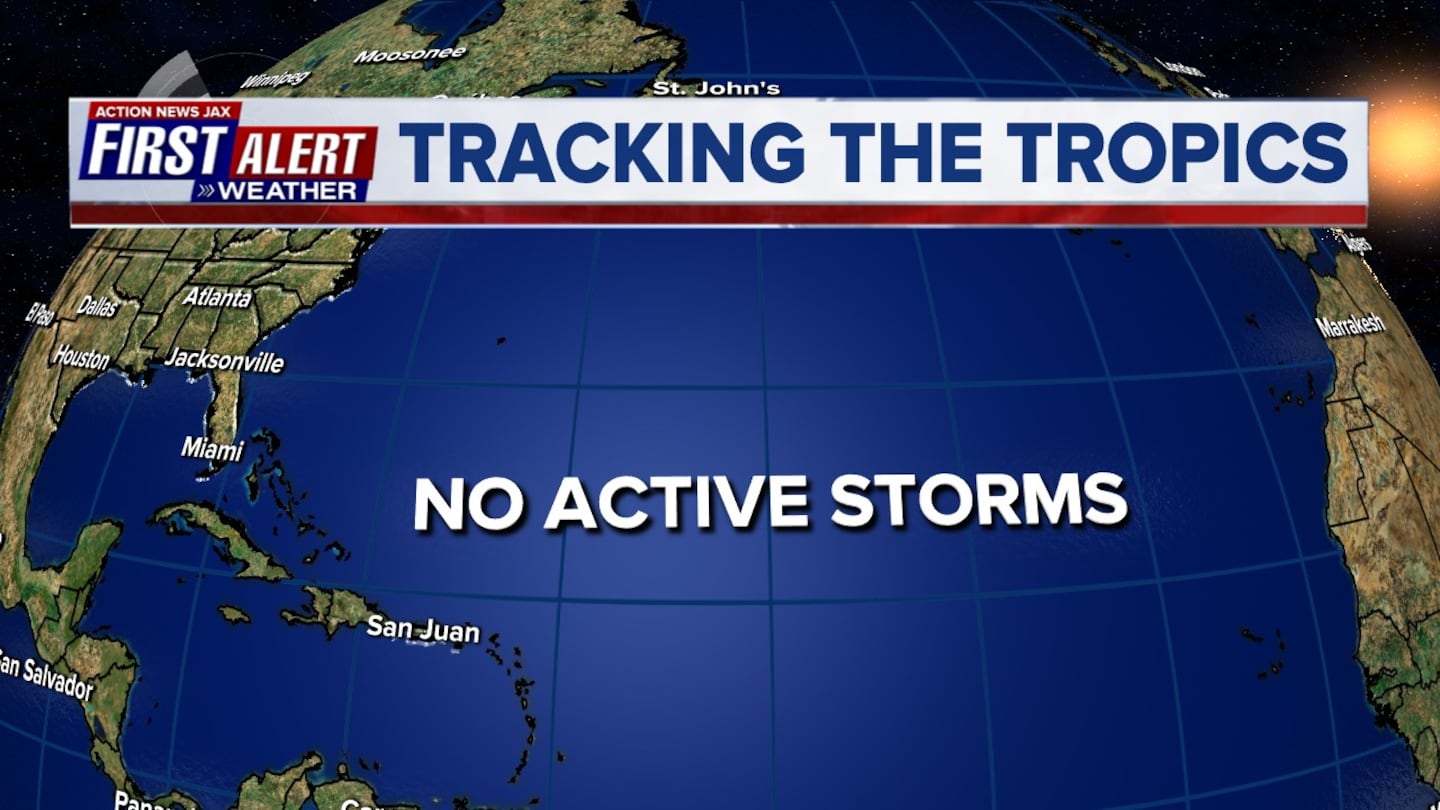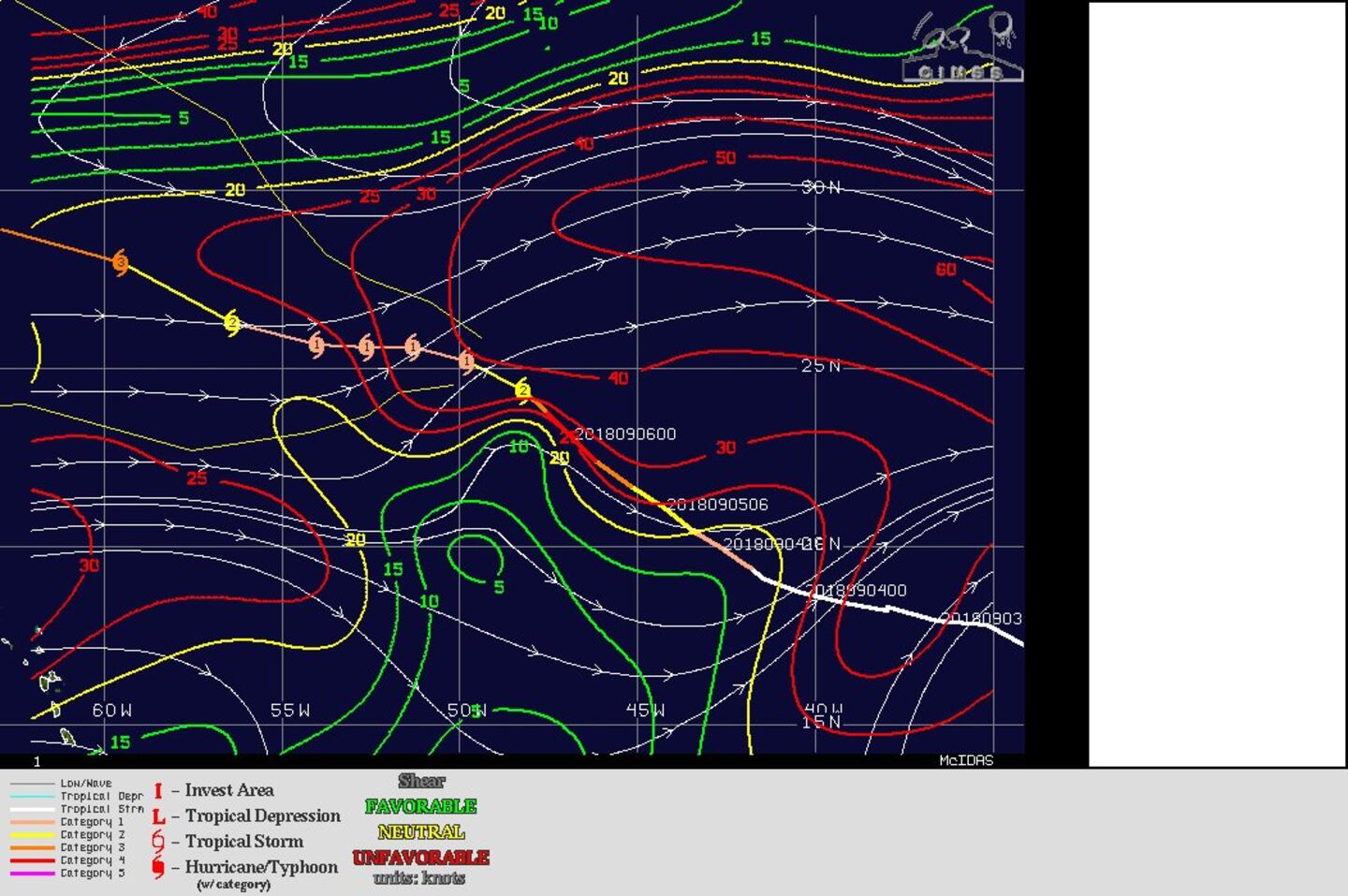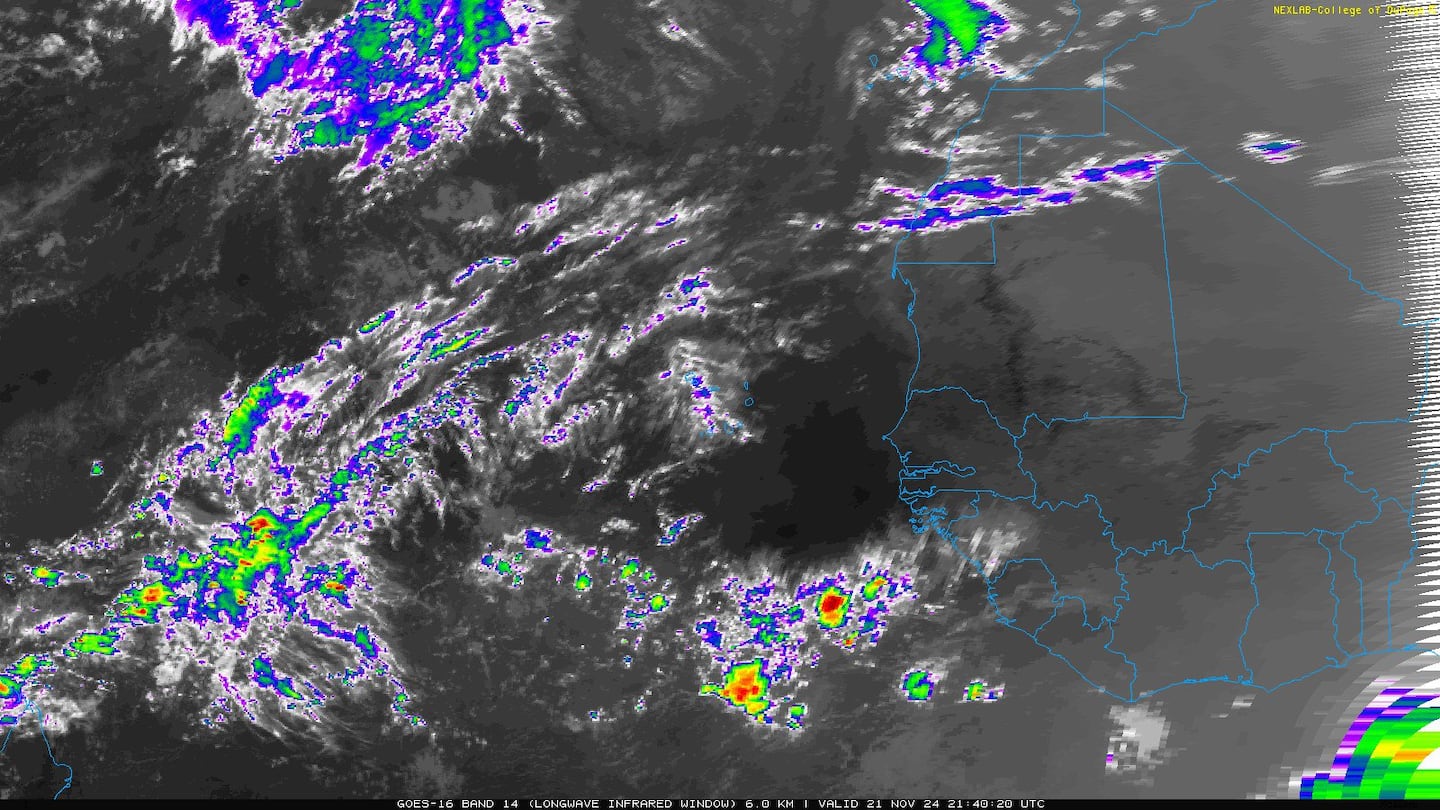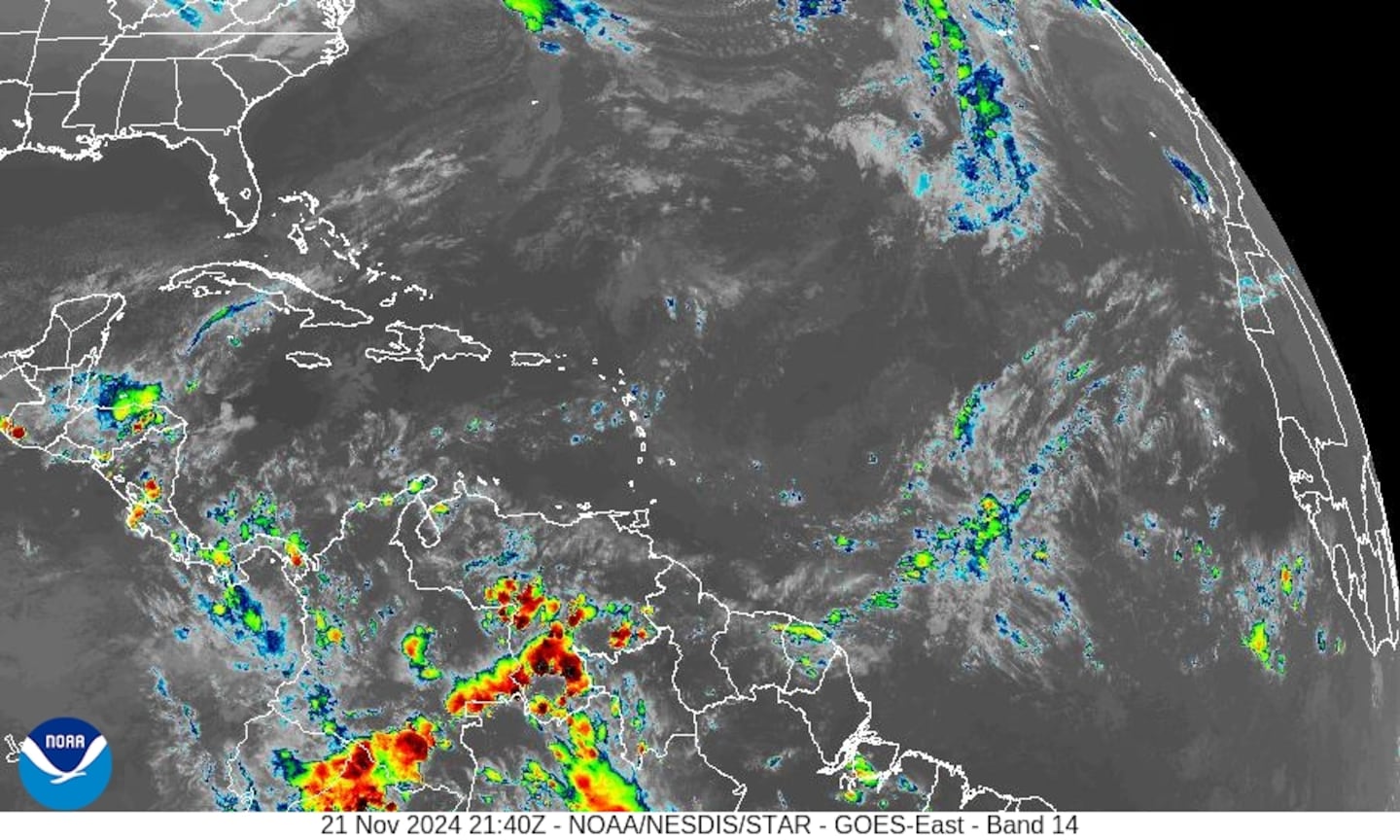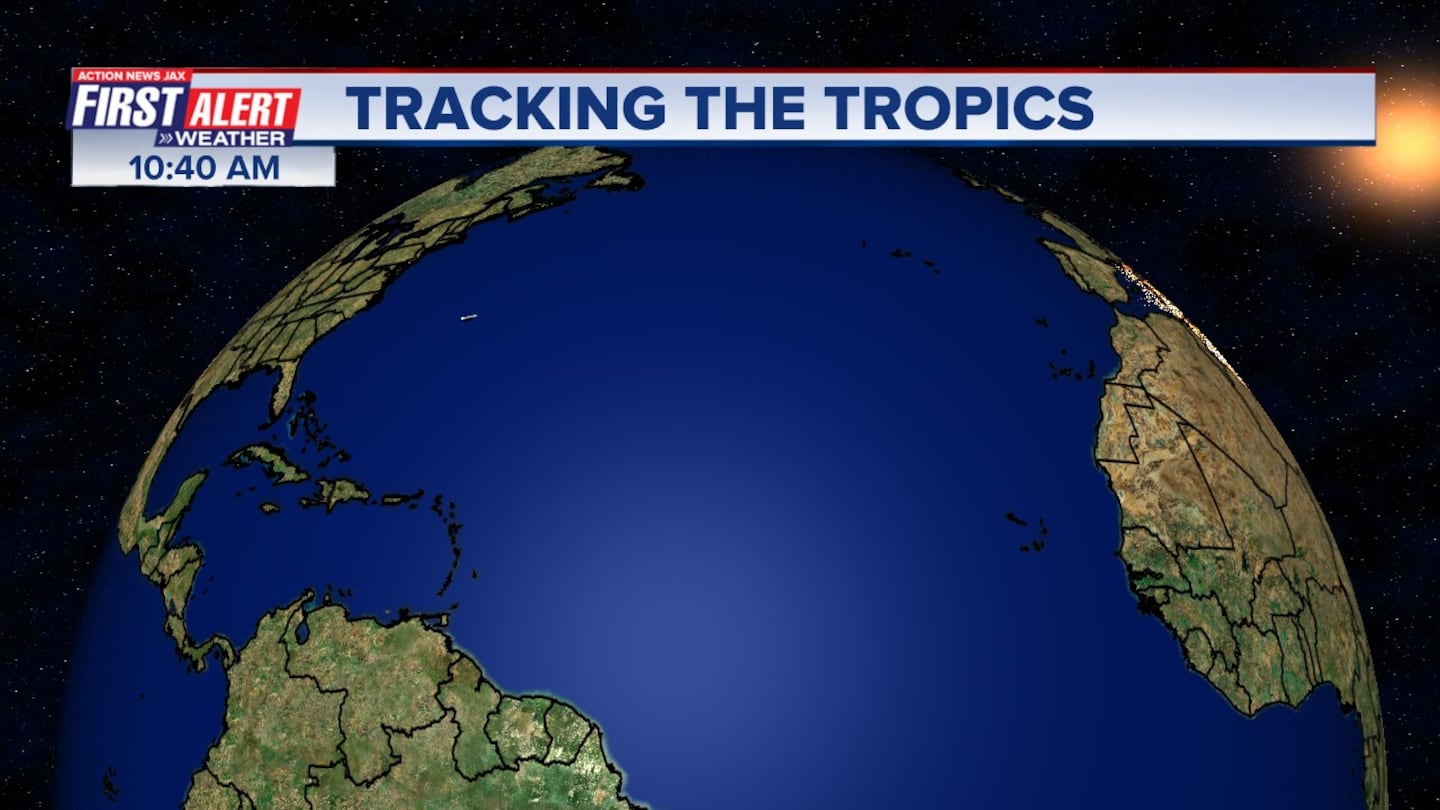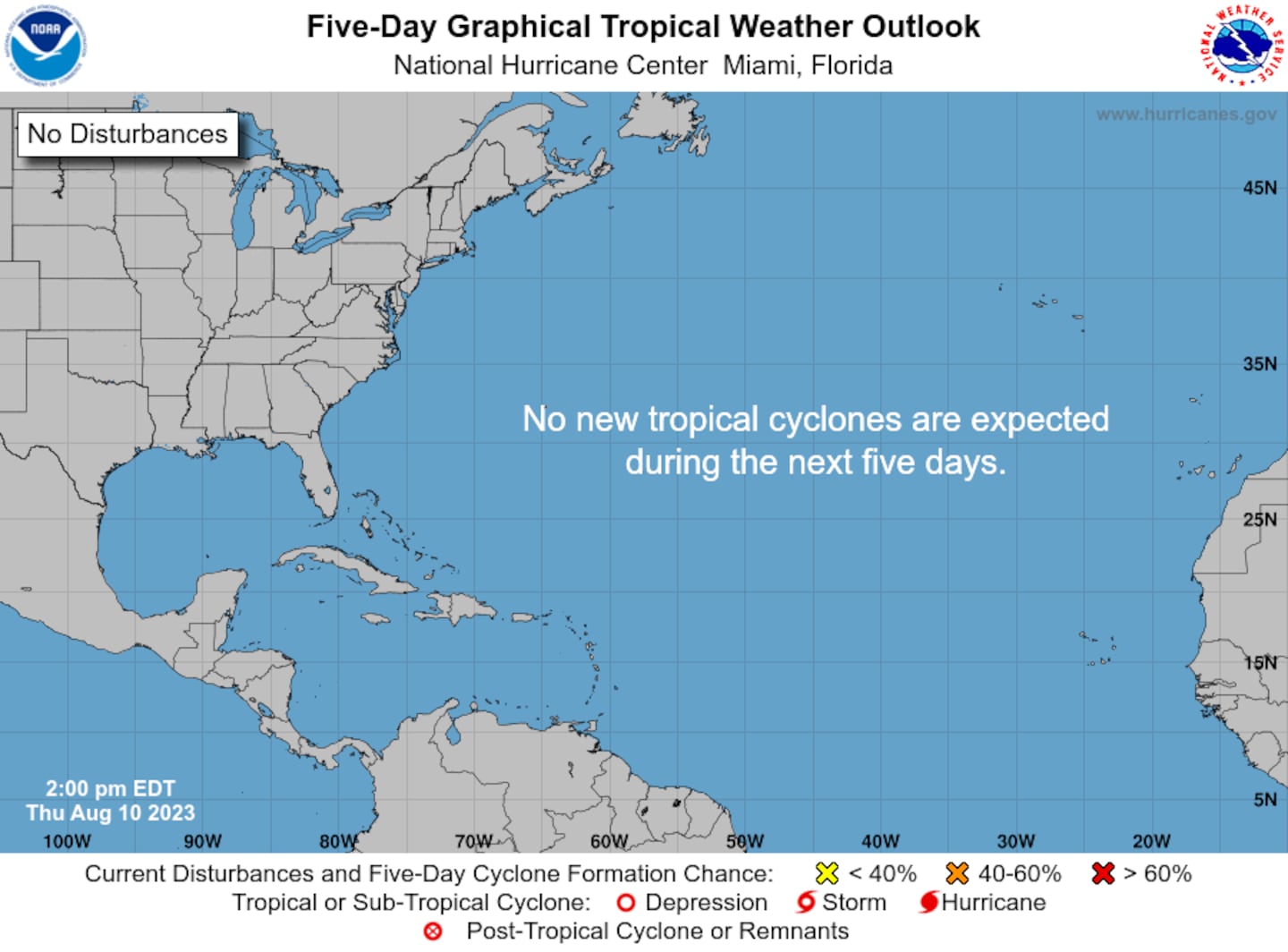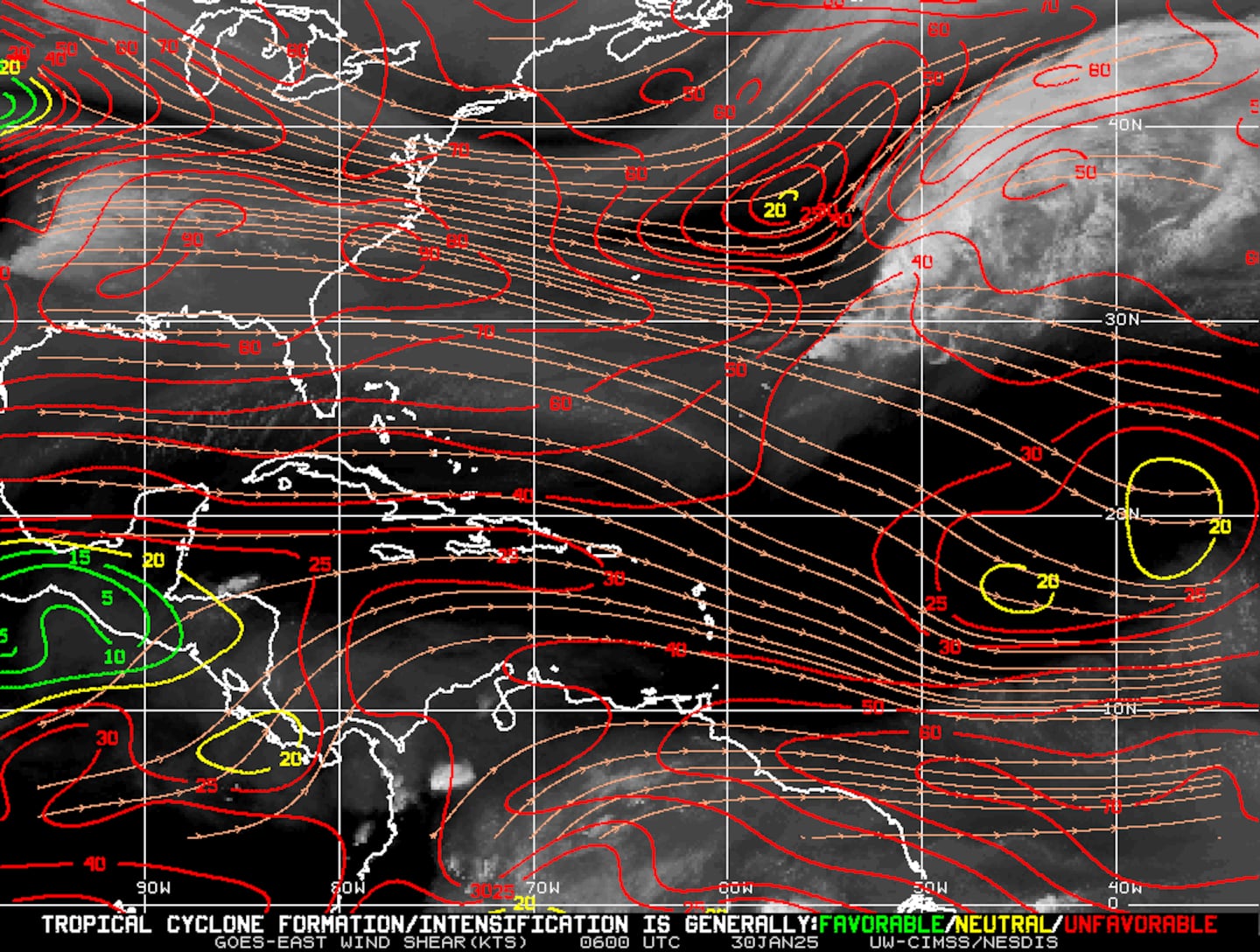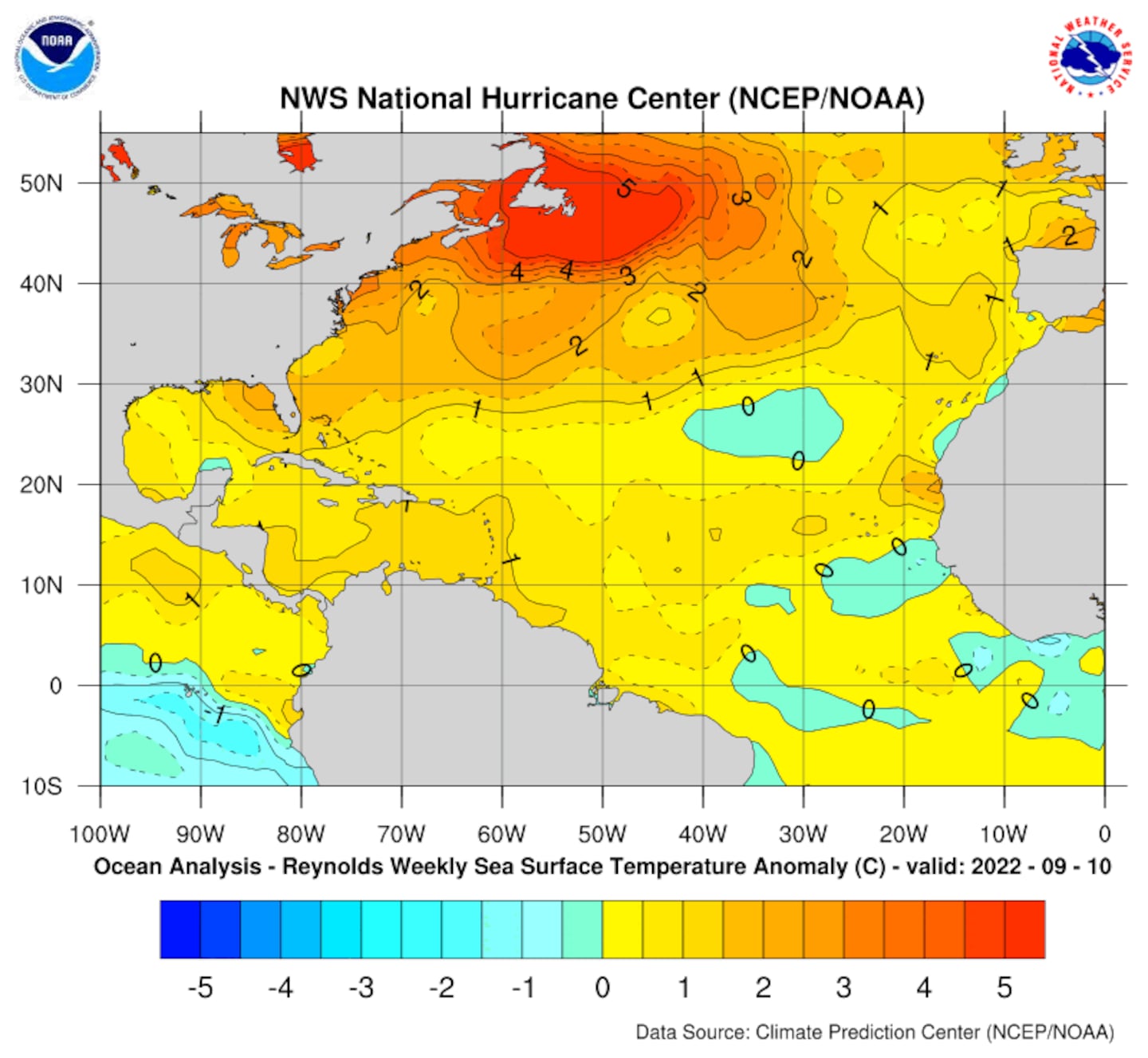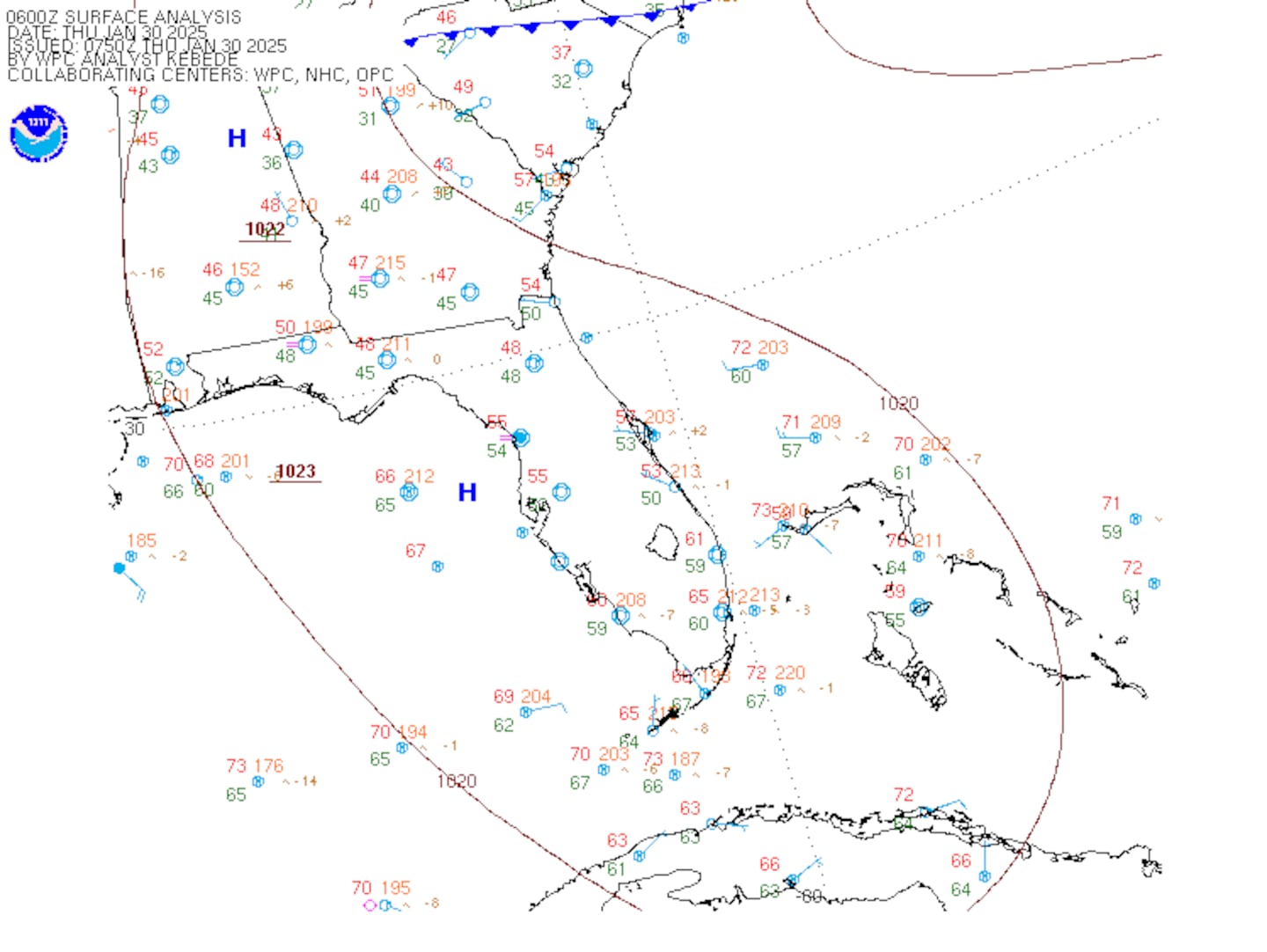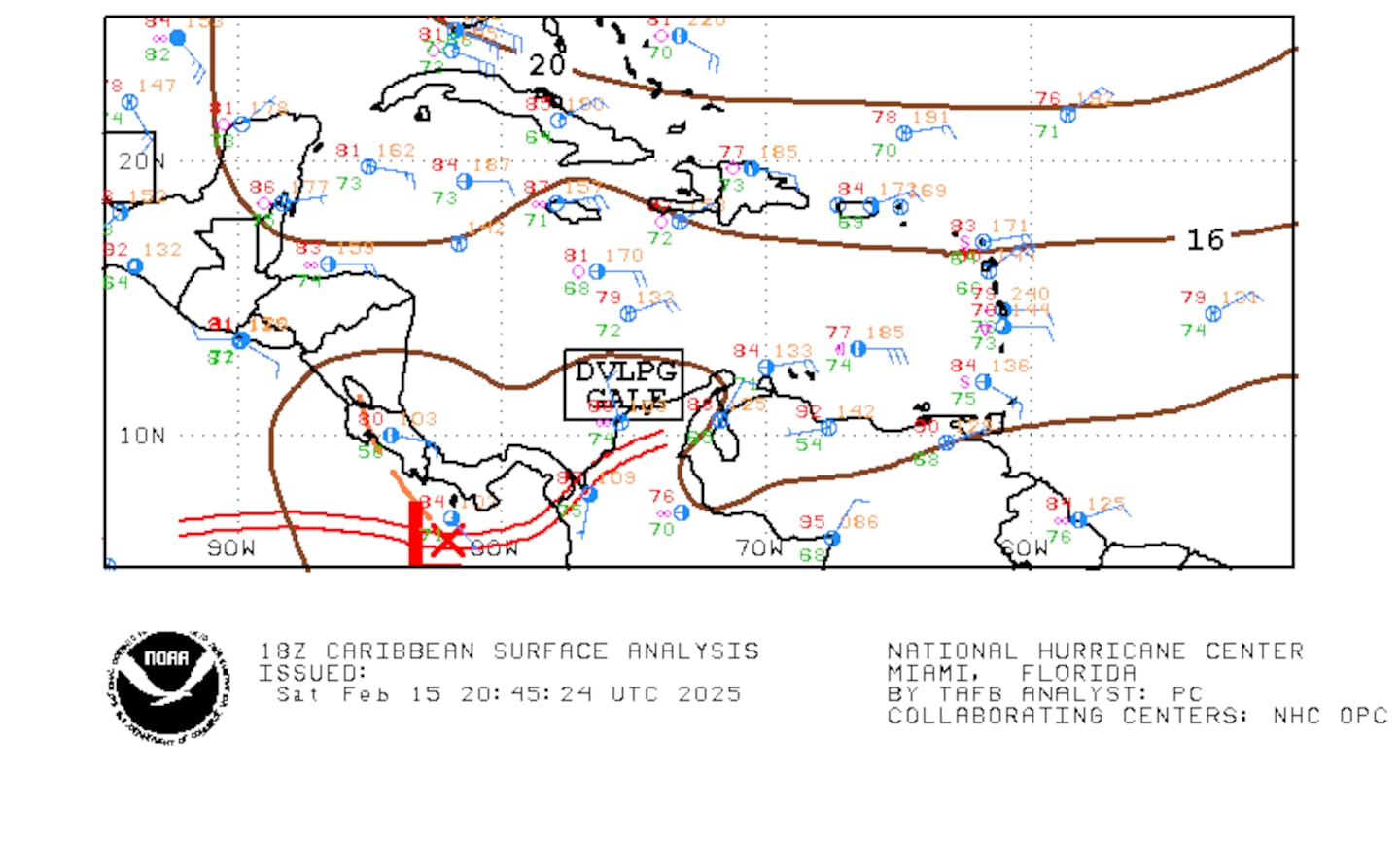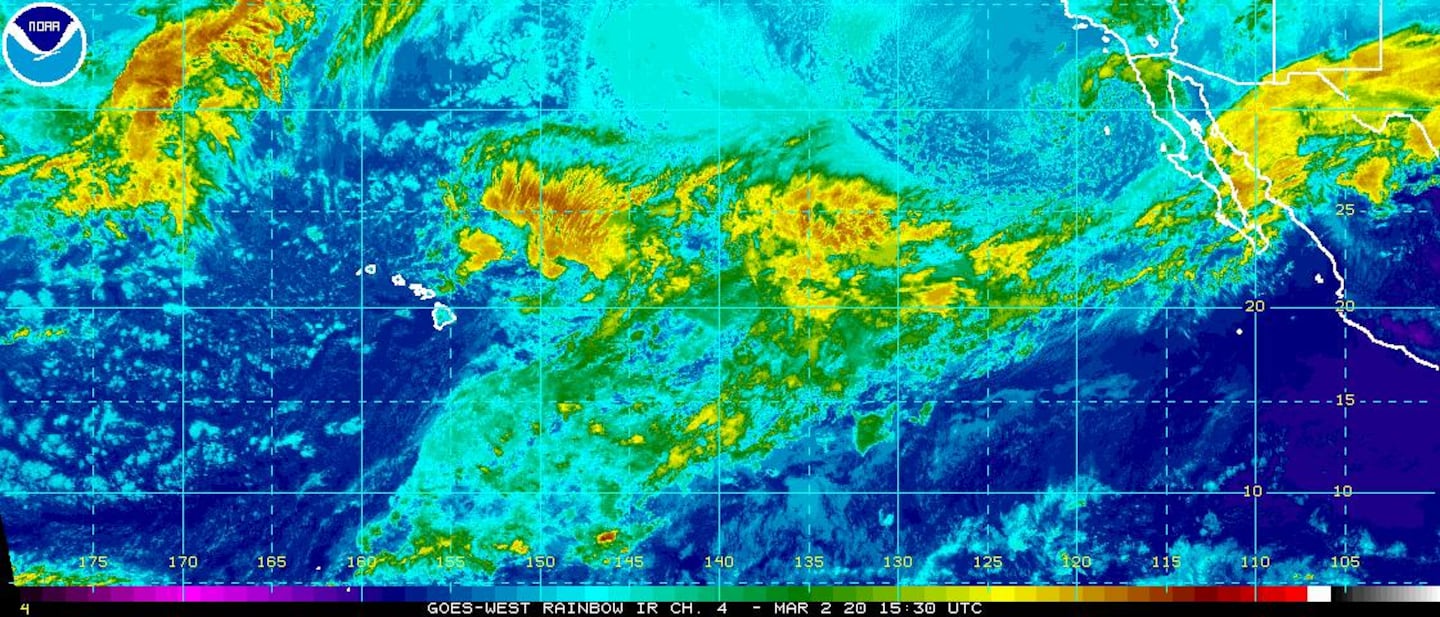Sept. 6, 2018 — The "Buresh Bottom Line": Always be prepared!.....First Alert Hurricane Survival Guide... City of Jacksonville Preparedness Guide... Georgia Hurricane Guide.
Watch "Surviving the Storm".....
Local - Jacksonville/NE Fl./SE Ga - No direct impacts from the tropics through the upcoming weekend though there will be an increased easterly swell at our beaches from distant Florence...
The last NHC advisory on Gordon was issued Wed. morning. The weakening remnant low pressure area moved into Arkansas early Thu. & will still produce heavy rain over parts of the Midwest & even the Northeast through Sat.
Otherwise.... a notable "spin" is east of Florida in satellite imagery. This feature is a tropical upper tropospheric trough or "TUTT" - not the king or old SNL skits but rather an upper level disturbance that will enhance showers & storms over Florida into the weekend. Once in a while, these kind of features can eventually lead to surface development (low pressure), but such is not expected in this instance.
Elsewhere... "Florence" became the 3rd hurricane of the '18 Atlantic season Tue.... went "major" (Cat. 3 then briefly Cat. 4) Wed. ... & continues over the Central. Atlantic. This burst of strengthening occurred in the face of strong shear out of the southwest & a good deal of dry air in the vicinity. So Florence is likely to weaken some for a while - possibly because of structure changes such as eye wall replacement cycles as well - before potentially strengthening again in the long run. While a full recurve is not a sure thing, don't get too caught up in individual run output of any particular model. We've seen huge swings on virtually all the models with where Florence might be next week. Even the "Euro-loved" model has shown differences of thousands of miles from one day to the next! Bottom line at this point: East Coast needs to stay alert & up to date & one should always be prepared for what mother nature might have in store.
For the moment.... Florence is moving steadily northwest & will turn more west/northwest - westward at times - over the Central Atlantic, slow then even stall - or edge slowly west - as strong high pressure builds across the N. Atlantic late week into the weekend & - an important point - becomes reinforced next week. The turn west/northwest &/or stall will be something to place close attention to. It seems pretty obvious that the next upper level trough / surface cold front this weekend/early next week will leave Florence behind & then that's when we have to figure out if it's eventually a more northward turn or continued movement west toward the U.S.
The European model has generally shown a weaker tropical cyclone initially which is proving to not be the case. The GFS model has been showing a sharper turn to the north with a stronger tropical cyclone earlier in the period as we saw Wed. into early Thu. The two models have recently come into better agreement which, quite frankly, is meaningless this far out (week or so)... before the critical "fork in the road" over the weekend into early next week with the big question mark being just how strong & expansive high pressure is over the N. Atlantic. The UKMET model has generally trended farther south & west. But all of the models are doing some flip-flopping & realize - as I've always said - they are just models.
I'm not ready to fully bite on any of the scenarios but the slowing of the storm over the Central Atlantic later this weekend/early next week will be a crossroads after which will be the critical move that's highly dependent on high pressure to the north. I will say that the tendency the latter part of this season has been for a pretty strong upper level ridge + surface high pressure from the upper U.S. east coast eastward into the N. Atlantic. If this pattern remains in place or even strengthens then Florence will not likely have the escape route to the north.
Plenty of time to see how things evolve with Florence. It would seem to me that any direct impact on the U.S. would not be until the middle to end of next week - from approximately Sept. 12-17th or so. However, easterly swells emanating west from the hurricane will start arriving at Jacksonville & other east coast beaches over the upcoming weekend into next week which will include an increasing dangerous rip current risk.
On satellite imagery.... it's clear Florence is a shadow of its former self (so powerful Wed.):
The map below is a mirror of the above spaghetti plots but shows an ensemble of all the model runs. DEFINITION OF ENSEMBLE MODELING: A set of forecasts that present the range of future weather possibilities. Multiple simulations are run, each with a slight variation of its initial conditions and with slightly perturbed weather models. These variations represent the inevitable uncertainty in the initial conditions and approximations in the models. They produce a range of possible weather conditions.
It's worth noting that there are model runs all the way to the U.S. and there are model runs showing recurvature. BUT there has been a definite trend west the last several days. At the moment, a combination of model runs is just about split 50/50 on whether or not Florence makes it all the way to the U.S.
Shear analysis midday Thu. from CIMMS shows Florence has entered an area of moderate to strong shear which the hurricane will traverse through Fri. Once farther west, shear relaxes + moisture & water temps. increase which should allow for restrengthening.
The Saharan dust (again courtesy CIMMS) shows just how dry the air is over the Central & Eastern Atlantic making Florence's rapid strengthening Wed. all the more remarkable. It's also an indication of what the two following tropical waves will be up against as they move west & northwestward.
Otherwise.... the well advertised Atlantic changes - regarding potential storm development - are underway & should continue into at least the middle of Sept. The uptick in activity coincides with a very persistent pattern of surface & upper level high pressure anchored over or near the N. Atlantic which implies lower pressures to the south (the ol' what goes up, must come down postulate). The upper level map below from the GFS model for Mon., Sept. 10th shows the upper level troughs far to the north as Florence tries to move west or west/northwest underneath. The orientation, position & strength of high pressure ridges will help determine how far west Florence & other tropical systems might go. Combine this set-up with the approach of the peak of the season, less shear overall, warm ocean temps., lots of moisture & a MJO pulse, & you get an active period in the tropics/Atlantic Basin.
0
1
Also of concern.... another wave - probably two - over the far Eastern Atlantic. At least one of these waves will have the potential to move farther west over the Atlantic as high pressure tries to assert itself across parts of the Central/Northern Atlantic. Just how strong the Bermuda high is - or is not - will go a long ways in determining whether or not waves/tropical cyclones can move all the way across the Atlantic.
I'm also keeping an eye on the NW Caribbean &/or Gulf of Mexico for possible longer range tropical development.
The map below shows - in simplest terms - rising (green) & sinking (brown) air (related to the MJO). The green areas - in the tropics - are more favorable for tropical development & this kind of pattern is likely to overspread the Atlantic Basin in the coming weeks.
Florence followed by a couple strong tropical waves:
Spaghetti (model) plots for wave '92-L' over far E. Atlantic:
Mid & upper level wind shear (enemy of tropical cyclones) analysis (CIMMS). The red lines indicate strong shear......
The Atlantic Basin....
Caribbean:
Gulf of Mexico:
Water vapor imagery (dark blue indicates dry air) - notice the dry air right up against Florence:
Deep oceanic heat content continues to increase over the Caribbean & Gulf of Mexico as one would expect now that we're in August.....
Sea surface temp. anomalies show a general recent warming over a good portion of the Atlantic Basin ....
SE U.S. surface map:
Surface analysis centered on the tropical Atlantic:
Surface analysis of the Gulf:
Caribbean:
The E. Pacific remains a busy basin. Norman is turning northwest which will keep the tropical cyclone far enough northeast of Hawaii to only result in some sea & surf impacts on the north facing beaches... while Olivia moves westward & will be east of Hawaii - but weakening - early next week.
Norman:
Olivia:
Cox Media Group




